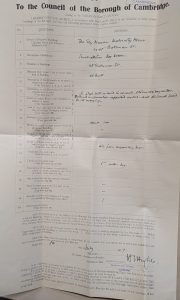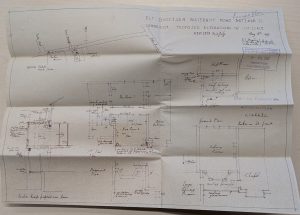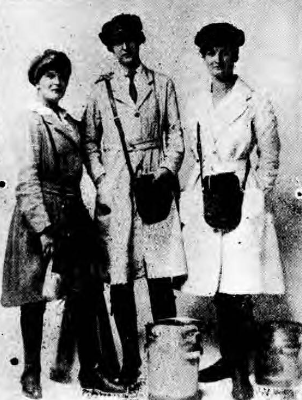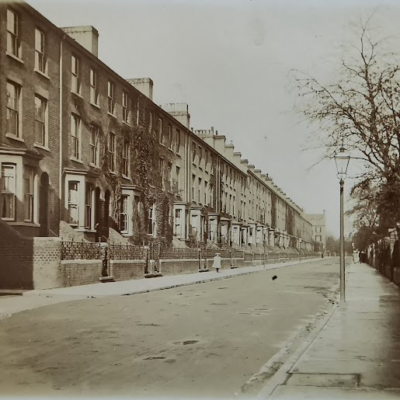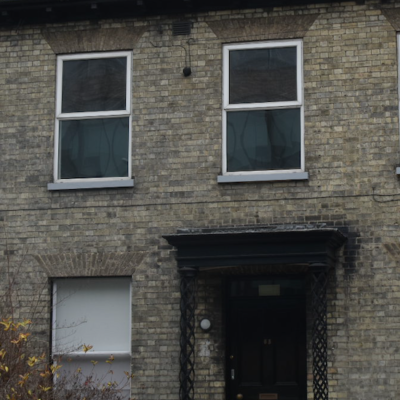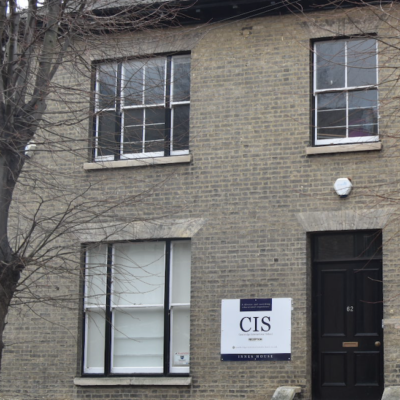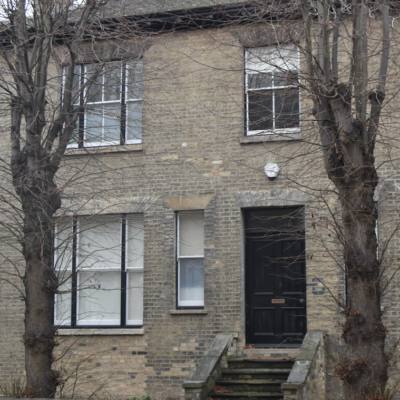Search by topic
- archaeology
- Building of Local Interest
- chapel
- charity
- church
- crime
- dressmaker
- fire
- Great Eastern Railway
- Listed building
- Mapping Relief
- medieval
- oral history
- poverty
- Public House
- Religious House
- Roman
- scholar
- school
- Then and Now
- tudor
- women
- work
- world war one
- world war two
Search by text
 48 Bateman Street
48 Bateman Street48 Bateman Street, Cavendish House
History of 48 Bateman Street
1870
Trinity Hall lease to George Carpenter
1881 Cavendish House
Isabel Thurlbourn, 40, schoolmistress, b Cambridge
Catherine, sister, 36, schoolmistress, b Cambridge
Sarah Sharpe, boarder, 25, governess, b Beds
Kate Morton, boarder, 20, governess, b Suffolk
Annie Walker, boarder, 17, scholar, b Wickham Market Suffolk
Eugenie Eymad, boarder, 18, governess, b Holland
Anna Ambrose, 17, scholar, b Landbeach
Edith Walker, boarder, 14, b Yorks
Alice Granne, boarder, 15, b Lincs
Gertrude Walker, boarder, 10, b Yorks
Julia King, boarder, 14, b Bottisham
Harriet King, boarder, 12, b Bottisham
Jessie Sinclair, boarder, 12, b Ely
Alice Sinclair, boarder, 11, b Ely
Mary Ambrose, boarder, 14, b Swaffham
Millicent Nix, boarder, 10, b Somersham
Elizabeth Fisher, boarder, 16, b Norfolk
Emily Batterson, boarder, 14, b Impington
Jane Batterson, boarder, 15, b Impington
Sophia Jones, boarder, 14, b Ramsey
Jessie Westley, boarder, 13, b Newmarket
Camilla von Balasy, boarder, 16, b Hungary
Mary Speeding, boarder, 15, b Sunderland
Minnie Darlow, boarder, 17, b Ramsey
Mary Heath, servant, 36, cook, b Weston Colville
Elizabeth Pywell, servant, 27, housemaid, b Whittlesey
George H Marcer, servant, 18, page, b Chatteris
Annie Walker is the subject of an article in the Antiquarian Astronomer, June 2029: Annie Walker (1863-1940): Britain’s second woman professional observing astronomer by Roger Hutchins and Mark Hurn. They note that Annie was the daughter of Ephraim Walker, a miller at Campsey Ashe in Suffolk. Annie was sent aged 10 to the school at Bateman Street. Able t mathematics Annie set herself the goal of the Local Senior mathematics exam. But unable to take this until 1882, in 1879, aged 15, she gained part-time employment at the Cambridge Observatory. In 1901 Annie was living at the Observatory.
1901
Helen Campton, 32, headmistress, b Sawston
Florence, sister, 26, teacher, b Sawston
Jane A, cousin, 33, teacher, b Lincs
Hilda M Whitely, boarder, 22, teacher, b Yorks
Elizabeth S Meyer, 18, schoolgirl, b Germany
Mary L Holiday, 16, schoolgirl, b Duxford
Else M A Jones, 14, boarder, schoolgirl, b Cambridge
Marcel F Parker, 15, boarder, schoolgirl, b Yorks
Mandolina Dewhurst, 13, boarder, schoolgirl, b Cambridge
Mabel Jackson, 13, boarder, schoolgirl, b Newmarket
Marguerite C Smith, 10, boarder, schoolgirl, b Cambs
Grace A Howell, 29, cook, b Cambs
Florence D Hall, 23, housemaid, b Cambs
1911
Winsome Williams, boarder, 14, b London
Marguerite Holmes, boarder, 7, b Ilford
Agnes Janet Martha Learmonth, teacher, 25, b Scotland
Jessie Mary West, teacher, 25, b Essex
Jane Anne Crampton, teacher, 43, b Lincs
Helen Priscilla Crampton, 42, head mistress, b Sawston
Grace Howell, servant, 33, b Sawston
Emma Bareford, servant, 19, b Cambs
1913 Ladies School
Miss Helen Crampton
1920 Cambridge Daily News 1.6.20 contains report on infant mortality in the city. This contains mention of the proposed home in Bateman Street. “They hoped very soon to see a home opened in Bateman Street where unmarried mothers might live with their children until they were able to make suitable arrangement.” On 31.5.20 there had been a request for furniture etc. to equip the new home.
1937 Planning application and plans for 48 Bateman Street
1938 press cutting referring to Bateman Street Maternity Home

1938 Cambridge Daily News Bateman Street Cambridge Maternity Home (Cambridgeshire Archives CACG collection)
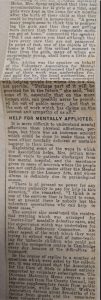
1938 Cambridge Daily News Bateman Street Cambridge Maternity Home (Cambridgeshire Archives CACG collection)
1946
Amelia Josephine Bloye (Josephine Amelia)
Josephine was born 24.12.1923 and died 25.11.2001. Her mother was Elizabeth Bloye who in 1955 was living at La Hogue Cottages in Chippenham. In 1939 Elizabeth, b 1902 Hackney, was living with her parents at Ten Mile Bank, near Downham Market.
1956 (Electoral Roll)
Alma Beeton
Jane Kayley
Margaret Poulton
Mary Stubbs
1957
CS sent this commentary in 2025 based on his mother’s experiences:
[My mother] (born in 1940), and she was from Feltwell in Norfolk, where she lived in a tied cottage … with her parents. My grandfather was an agricultural labourer working for a large landowner. She spoke of the harsh regime at Bateman Street and remembers having to scrub the steps while pregnant with me. In my periodic visits to Cambridge I often walk past the building and see that indeed there are a fair number of steps leading up to the front door. As an unmarried teen mother-to-be in 1957, my guess is that she was dispatched to Cambridge when she became pregnant either on the instruction of my grandmother or by some public authority.
I think also that many girls of this era from the villages surrounding the US air bases at Lakenheath and Mildenhall also fell pregnant from US servicemen who then abandoned them. There must have been many such teenagers from the Fen and Breckland villages who were forced to go to Bateman Street and similar institutions.
1958 (Electoral Roll)
Marjorie Charles
Pauline Rowney
Barbara Shailes
Mary Stubbs
1958
Leased to Ely Diocesan Board
1959 (Electoral Roll)
Barbara Shailes
Mary Stubbs
1962
Ely Diocesan House (Miss M Stubbs matron)
1966 (Electoral Roll)
Mary Dawson
Ruth Pegler
Mary Stubbs
Audrey Walker
1970
Ely Diocesan Home (Miss M Stubbs SRN, SCM matron)
Cambridge Daily New 31/10/70 “City home for unmarried mothers closes”. The report says the home is closing as there is no longer any need for it. It opened after WWI and 2,000 mothers have stayed at the home.
Contribute
Do you have any information about the people or places in this article? If so, then please let us know using the Contact page or by emailing capturingcambridge@
License
This work is licensed under CC BY-NC-SA 4.0





